Spring Equinox approaches this Sunday and icons of Spring abound. The flowers are in full bloom, bees are buzzing everywhere and the weather is warm and sunny, though the August winds have decided to show off in September instead. The lambs and calves in the surrounding paddocks are getting bigger, and the magpies have been pretty friendly in my area, though we are now in the middle of the swooping season.
Last night we enjoyed another supermoon and across the northern hemisphere, from the UK to North America, and Asia, various cultures celebrated the Harvest Moon with regional traditions. Although many people in the southern hemisphere mimic the northern hemisphere names for the full moon, according to the seasonal calendar we are more appropriately celebrating the Egg Moon or Hare Moon.
In last week’s episode, Episode 17 - Spring Equinox: Eastern European Traditions, I mentioned that I’d decorated my home to mark the Spring Equinox and the celebration of Eostre. In the next two episodes, we’ll explore the history, symbols and traditions of Eostre and its Christianised version of Easter. Next week's episode explores the Easter Egg tradition. In this episode, we’ll learn about the Christian celebration of Easter, Eostre the Germanic goddess of Dawn and Spring, the March Hare, the Scandinavian Easter Witch tradition and the origins of the Easter Bunny.
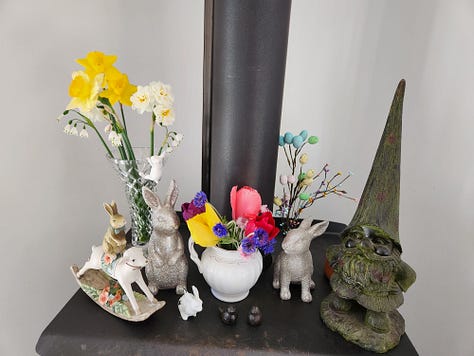
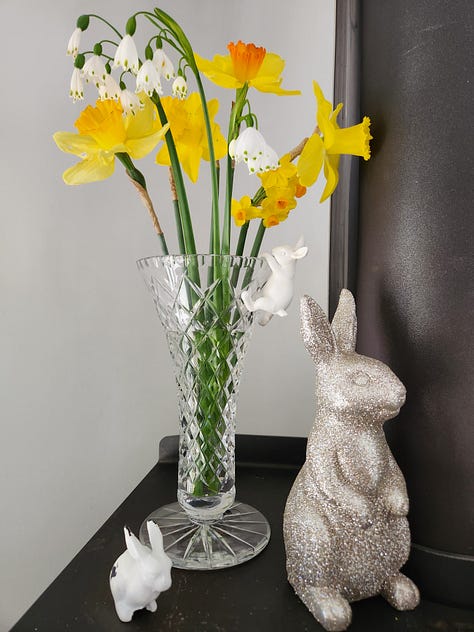
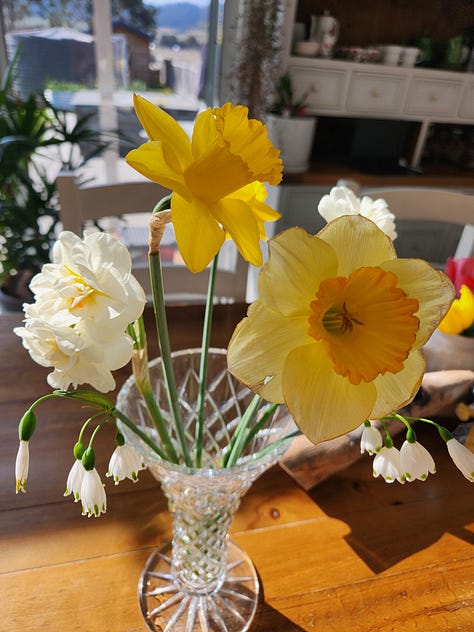
The Christian Easter Celebration
Easter is one of the most important dates on the Christian calendar, commemorating the resurrection of Jesus Christ from his death by crucifixion. Unlike fixed-date holidays such as Christmas or Halloween, Easter falls on a different date each year, although it is connected to the Spring (vernal) Equinox. The dates for Easter are determined through a system of rules established by the Council of Nicaea in 325 A.D. However, there are still differences in the dates for Easter between the Eastern Orthodox Church, which uses the old Julian Calendar, and the Western Christian denominations that use the Gregorian Calendar (see Episode 14 - The Moon and the Wheel of Months for more information about the different calendars).
Calculation of the dates for Easter in both branches of the Christian church is known as computus, and it involves:
Determining the date of the vernal Equinox, usually 20 May in the Northern Hemisphere (although this can vary by a day or so from year to year)
Calculating the first full moon after the Equinox, called the Paschal Full Moon (paschal means ‘relating to Easter or to the Jewish Passover’)
Easter is set as the first Sunday following the Paschal Full Moon
For those who like to celebrate the lunar calendar in the Southern Hemisphere, the first full moon after Spring Equinox will occur this year on 17 October. However, I like to designate the full moon closest to the Spring Equinox as the Egg or Hare Moon, which makes it last night's full moon.
The date for commemorating the death and resurrection of Jesus was not necessarily related to the actual, historical date but rather to align with and assimilate the symbology of rebirth associated with the seasonal celebration of the Spring Equinox in pre-Christian Europe.
In most Northern and Southern European countries, the word for Easter stems from Paschal e.g.
Romance/Latin languages - Pascua (Spanish), Pâques (French), Pasqua (Italian), Páscoa (Portuguese), and Paştele (Romanian)
Northern Europe - Påsk (Swedish), Påske (Norwegian and Danish), Páska (Icelandic), Pääsiäinen (Finnish), and Pasen (Dutch)
Eastern Europe - Paskha (Russian)
The English term Easter is a Germanic term from the same root as the German word for Easter, Ostern, which we will explore next.
Eostre/Ostara


Eostre or Ostara are Germanic names for the goddess of Spring or dawn. The English scholar Bede wrote in the 8th Century about the pagan Anglo-Saxon celebration of Ēosturmōnaþ (Easter month), equivalent to the month of April:
Eosturmonath has a name which is now translated “Paschal month”, and which was once called after a goddess of theirs named Eostre, in whose honour feasts were celebrated in that month. Now they designate that Paschal season by her name, calling the joys of the new rite by the time-honoured name of the old observance.
Translation of Bede: The Reckoning of Time by Faith Wallis (1999). Liverpool University Press.
The words Eostre, Ostara, oestrogen (female hormone) and East come from the same Indo-European root word aus, which means ‘shine’ or ‘shining’ and describes the direction of the sunrise in the East. Some scholars believe that Eostre/Ostara is connected to the older Egyptian goddess Isis and/or to Ishtar, the Akkadian (Mesopotamian) goddess of war, sexual love and fertility. However, there does not appear to be a consensus in academic circles on if and how these links exist.
March Hares, Witches and the Easter Bunny

Hares (Lepus genera) are often associated with this time of year as symbols of fertility. Unlike rabbits that live in communal underground burrows and are most active at dawn and dusk, hares nest above ground and are usually solitary and nocturnal. They are also leaner than rabbits, and have longer bodies, legs and ears, with dun-coloured coats (or white coats if they are snow or mountain hares). All hares have distinct black marks on the tips of their ears.
The video (8:02 mins) below provides a great explanation of the differences between hares and rabbits.
You may have heard the term ‘mad as a March hare’ and you might be familiar with the mad March Hare from Alice in Wonderland’s Mad Hatter’s Tea Party. The phrase refers to the behaviour of hares during the mating season, which peaks in March during the Northern Hemisphere’s Spring.
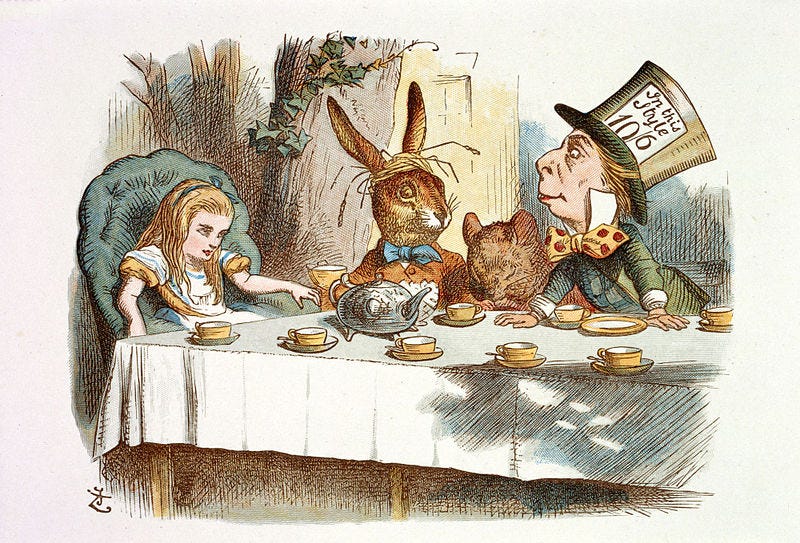
Male and female hares become active throughout the day when males often chase females to mate. If a female hare is not interested, or if she wants to test his strength, she will engage the male in a boxing match that can send fur flying but doesn’t usually result in serious injuries. Female hares ovulate during sex and can become pregnant with a second litter while they are pregnant with a first litter, producing up to 40 offspring (called leverets) in one season, a very fitting symbol for Spring fertility!
Symbolism of the Hare
Hares are often connected with the moon in mythology from around the world, probably due to their nocturnal habits and their increased activity during full moons. Many of these cultures from the ancient Mayans and Aztecs to East Asia consider the moon’s shadows to depict a ‘hare in the moon’ rather than a ‘man in the moon.’
In early Chinese mythology, the hare was a symbol of resurrection and the moon’s shadows depicted a hare pounding the herb of immortality with a mortar and pestle. In Japanese mythology, the hare pounds mochi or rice cakes. Ancient Indian mythology also refers to ‘the hare in the moon’ but the hare in these legends is said to be a previous reincarnation of Buddha who offered himself up as a sacrifice to feed the needy and was taken up to the heavens by the gods.
This story is similar to an Aztec legend in which the god Quetzalcóatl came down to Earth in the form of a man to explore the land. He walked for hours, through the day and well into the night, soon becoming exhausted and starving. He came across a hare eating grass and as Quetzalcóatl could not eat grass, the hare offered itself to eat. Quetzalcóatl was so impressed with the hare that he raised her into the sky, stamping her silhouette into the moon to ensure that all people would remember the hare’s bravery and generosity.
The prehistoric Ancient Egyptian goddess of fertility and new birth, Unut or Wenut, was known as the swift one, whose sacred animal was the hare. Hares were sacrificed to her and she was often depicted with a woman’s body and a hare’s head. The hieroglyph of a hare sitting above water symbolised the concept of ‘existence’.

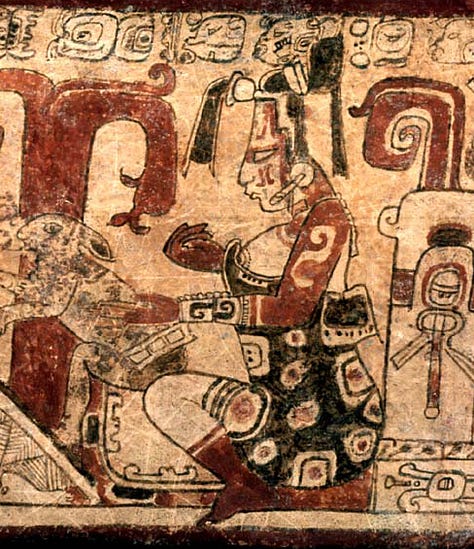
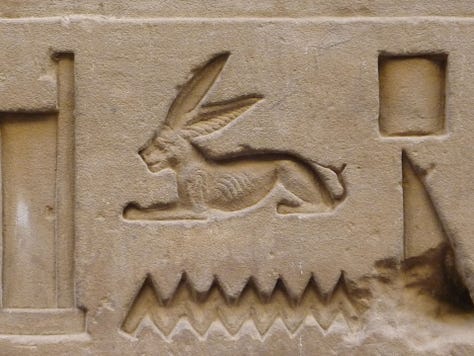
Hares were so revered in Europe that during the Neolithic age all the way through to the Iron Age, hares were ritually buried alongside humans, as a symbol of rebirth. They often appeared as symbols of sexuality in literature and art from Ancient Greece to the Renaissance. Hares were sacred to the Greek goddess Aphrodite and Aphrodite’s son Eros was often depicted carrying a hare to symbolise unquenchable desire. Julius Caesar mentioned that hares were not eaten in Britain except during the Spring Equinox as they were considered sacred animals. Even in art featuring the Virgin Mary, a white hare or rabbit is often used to symbolise her overcoming sexual temptation and her sexual ‘purity’.
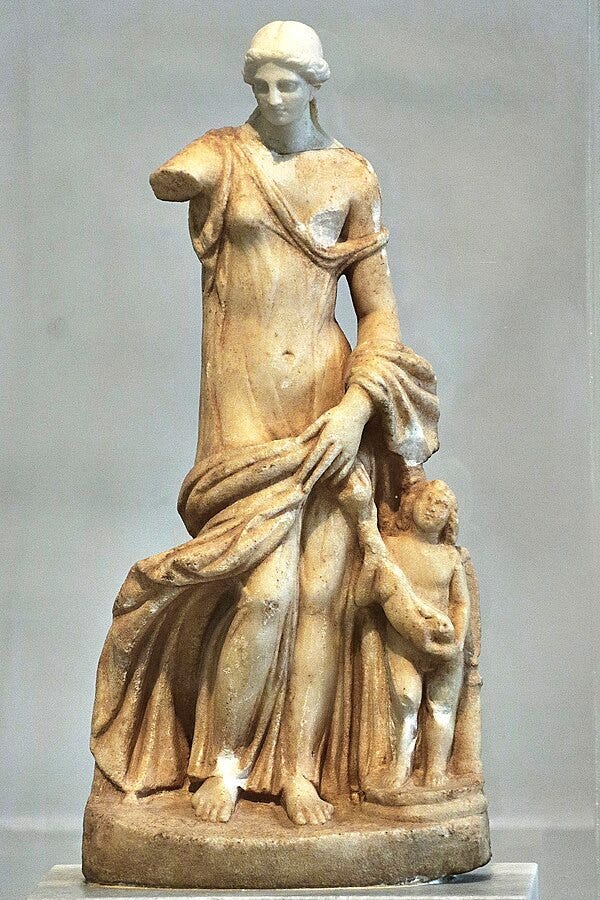

The Three Hares Symbol
The Three Hares symbol depicting three hares running in a circle with their ears touching is an ancient motif that adorns many medieval and more modern churches across Europe, particularly in France and Germany. It appears with the greatest frequency adorning old churches in Devon in England, where it is connected to the ancient Celtic Triskele symbol. The motif also appears in Jewish synagogues across Europe and throughout the Middle East.
The earliest depiction of the Three Hares motif occurs in cave temples in China dated from the 6th to 7th centuries and is associated with Buddhism. Some scholars believe that the Three Hares motif spread to Europe and Celtic lands via the Silk Route, while others believe that the Celtic Three Hares motif emerged independently. The symbol has meanings for pre-Christian, Christian, Buddhist and Jewish religions but it can also be viewed as a puzzle and optical illusion.
Drei Hasen und der Löffel drei und doch hat jeder seine zwei.
Three hares sharing three ears,
Yet every one of them has two.
Ancient German riddle for the Three Hares motif


Shapeshifting Hares and Witchcraft
Hares are also connected to shapeshifting and later to witchcraft, particularly in the Celtic regions of Europe as well as Scandinavia. In Cornwall, a white hare spied flitting near the water’s edge was a warning to fishermen of an imminent tempest. A white hare was also thought to be the spirit of broken-hearted young maidens, who haunt their faithless lovers and lead them to their death. In Welsh legends, the god Gwion shapeshifted into a hare to escape the goddess Ceridwen after he accidentally stole the mead of wisdom she was brewing for her son.
In Ireland, legend tells of the ancient Irish poet and warrior Oisín who hunted a hare and wounded it in the leg. He followed it into an underground hall only to find a beautiful young woman sitting on a throne, bleeding from an injured leg. There are many localised stories that appear across the British Isles and throughout Scandinavia, of hares being injured and those same injuries appearing in women accused of witchcraft, or of hares shot and mortally injured transforming into dying old women.
One commonly told version is of a farmer whose cows are suddenly not producing as much milk as normal. He discovers a hare (usually white) is stealing the milk and tries to kill it, usually by shooting it but he only manages to injure the hare’s leg or inflict a minor wound in the hare’s flank. The farmer tracks the injured hare to a neighbour’s house, where he finds his neighbour (usually an old lady) with an identical injury. Tales of milk hares (also called troll hares), witches and the devil were also common throughout Sweden.

An even older story from Dartmoor in England tells of a famous hunter called Bowerman, who disturbed a coven of witches while they were practising their rites around a cauldron. In revenge, the next time Bowerman went hunting, one of the young witches shape-shifted into a hare and led Bowerman and his hounds into a bog where she transformed them into piles of stones that are now known as Hound Tor and Bowerman’s Nose.

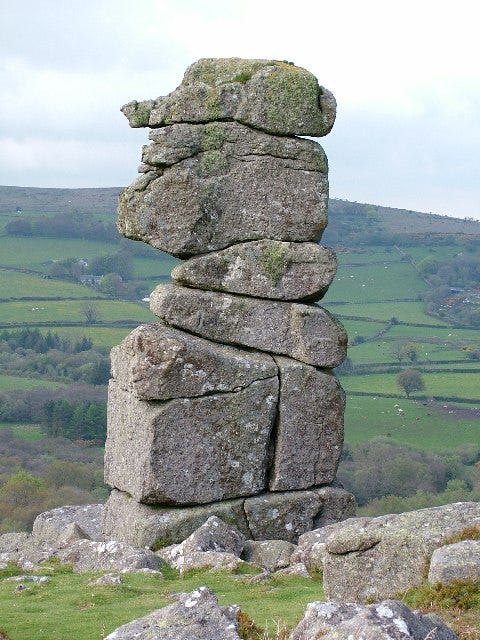
Although hares are usually solitary, stories and first-person accounts abound of people witnessing hares gathered in groups, forming large circles, and gazing inward, inexplicably silent and motionless, or of hares sitting still and staring up at the full moon, or of large groups of hares dancing and cavorting before storms begin. This strange behaviour is not scientifically documented and remains unexplained although legends attribute these gatherings to covens of shapeshifted witches.
In 1662, a Scottish woman, Isobel Gowdie of Auldearn, was on trial for witchcraft and was claimed to have said that in order to become a hare she only needed to say the words:
I sall goe intill ane haire, With sorrow, and sych, and meikle care, And I sale goe in the Divellis nam, Ay whill I com hom againe
Easter Witches
The connection of witches with Easter is particularly strong in Scandinavia. Påskkäringar is an Easter witch tradition celebrated in Sweden and Finland on the Thursday before Easter (Maundy Thursday) or Easter Saturday. The tradition began in the late 1700s, after the frenzy of the witch hunt and trials in the 1600s that saw over 200 women tortured to death in Sweden with hundreds more accused and ill-treated. These days children dress up as witches in headscarves and shawls, and go door to door, swapping homemade cards for sweats, similar to Halloween trick-or-treating. Finnish children will often recite a ‘spell’ wishing their patrons a healthy year.
“Virvon, varvon, tuoreeks terveeks, tulevaks vuodeks; vitsa sulle, palkka mulle.”

Giving and sending cards at Easter featuring Påskkäringar is also popular.


Maundy Thursday is said to be the day that Judas betrayed Jesus and released evil into the world. In Sweden and Finland, this was conflated with superstitions around witches who were believed to fly on their broomsticks to feast with the Devil on an island called Blåkulla. Many folk traditions emerged to protect against witches at Easter including painting tar crosses on barn doors, wearing clothes inside out, cross-dressing, and lighting bonfires. These traditions closely mirror Germany’s Walpurgis Night, which we will explore in an upcoming article about Beltaine.
The Easter Bunny
The most recognisable and beloved symbol of our modern-day Easter celebrations is the Easter Bunny, which originated in German and Northwest European 16th-century folklore. The Easter Bunny was originally called the Osterhase or Easter Hare by German Lutherans and played a similar role to Santa Claus during the season of Eastertide. The Osterhase judged whether the children had been well-behaved or disobedient throughout the year and left the ‘good’ children coloured eggs, sweets and sometimes toys that it carried in a basket.
Children made nests in their hats or bonnets for their Osterhase gifts or they would go on hunts around their house or in the garden to find brightly painted eggs hidden by the Osterhase. When Germanic immigrants settled in Pennsylvania, America in the 1700s, they brought their Easter traditions with them, including the Easter Hare, which became the Easter Bunny.
We will explore the history and tradition of Easter eggs, the Easter egg hunt and Easter games in next week’s episode. We’ll also explore the history and traditions of Easter foods like Easter bread, hot cross buns and marshmallow rabbits. Until then…
May green be the grass you walk on,
May blue be the skies above you,
May pure be the joys that surround you,
May true be the hearts that love you.
Traditional Irish Blessing





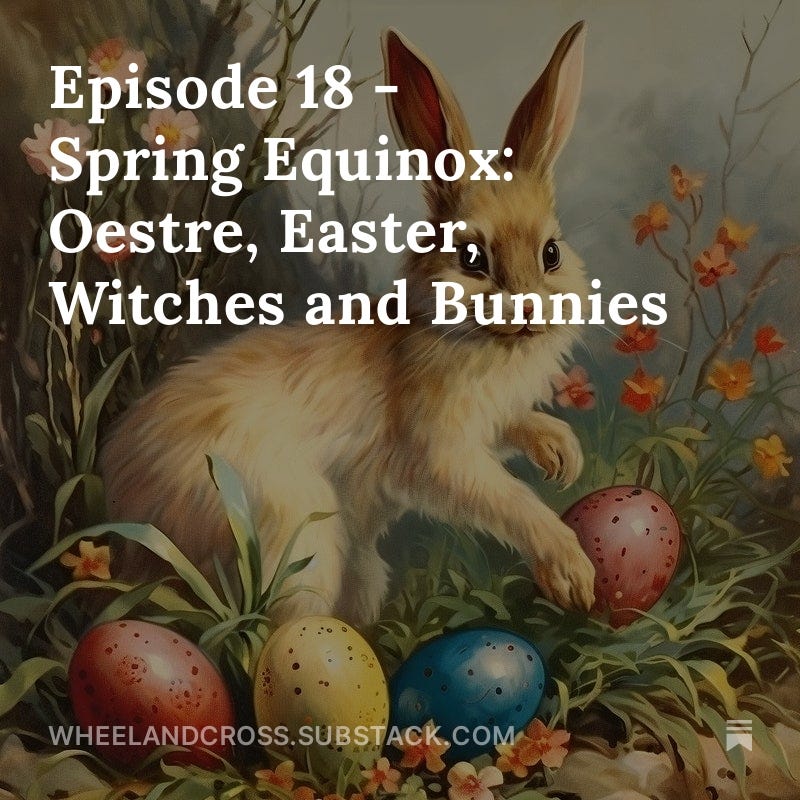





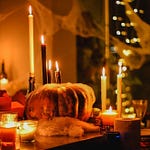




Share this post